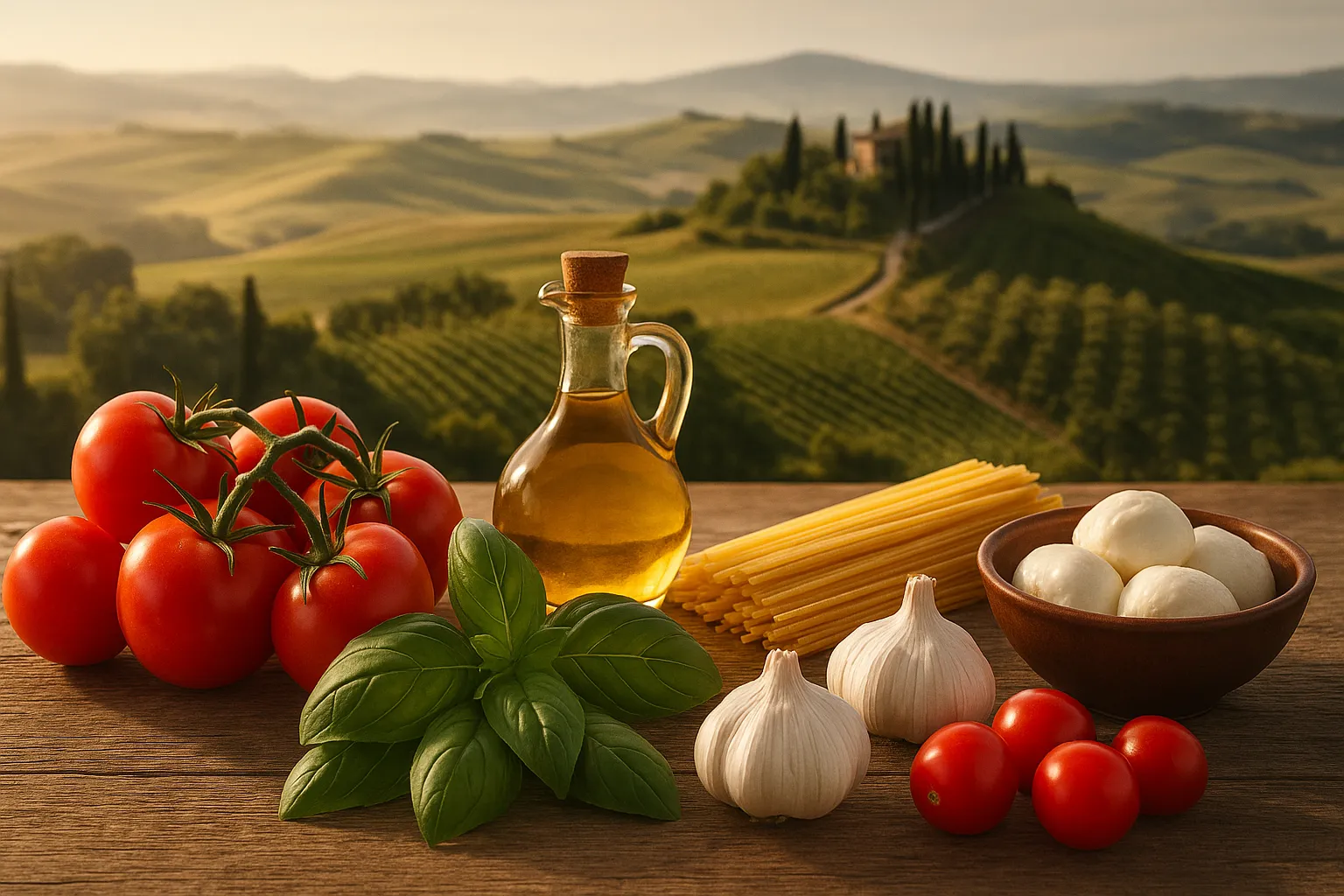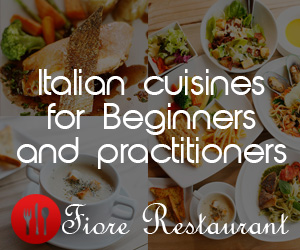If you’ve ever wondered why Italian food at certain restaurants tastes completely different from others, you’re experiencing the fresh ingredient factor. Last week, I watched a chef add fresh basil to marinara sauce. The aroma filled the kitchen, creating a completely different dish than what most know as “Italian food.” That moment showed me what authentic Italian food really means.
In this article, I’ll reveal how fresh ingredients make ordinary dishes taste like authentic Italian masterpieces. You’ll discover:
- How seasonal cooking creates Italy’s signature flavours
- The powerhouse fresh ingredients every Italian cook prioritises
- Specialty items that add sophisticated touches
- Real dish changes you can see and taste
- Your roadmap to authentic Italian cooking at home
These are the same principles taught in professional kitchens like Fiore Restaurant, where authentic Italian techniques meet fresh, quality ingredients.
Let’s dive into what makes Italian cuisine truly authentic.
Seasonal Cooking Italy: Nature’s Perfect Timeline
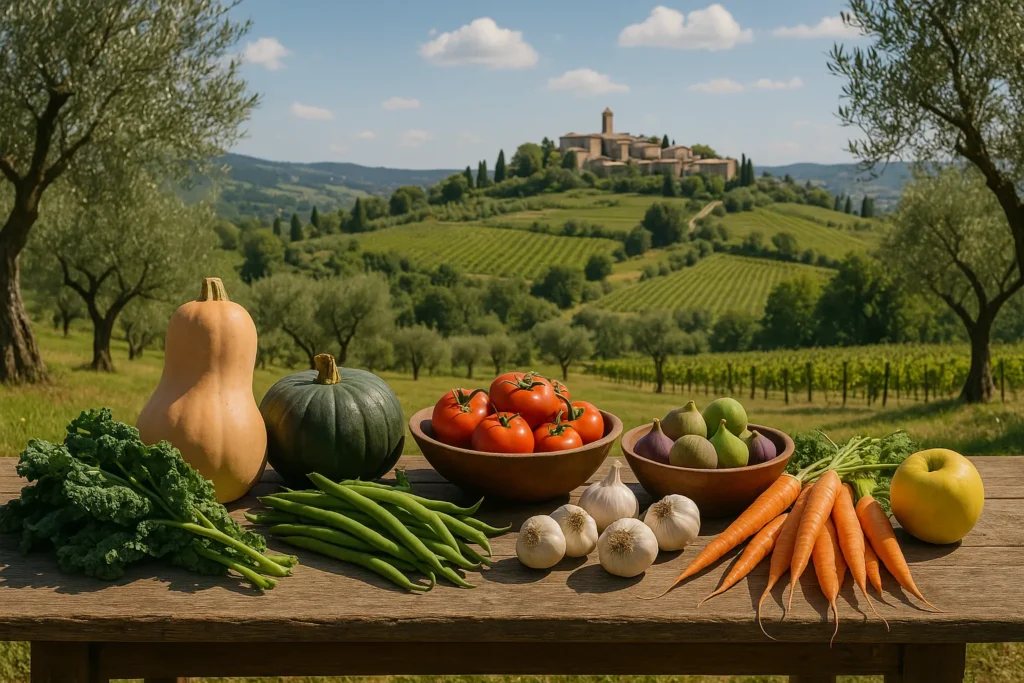
Traditional Italian nonnas never follow recipes the way most people think. They never cook the same dish the same way twice. Instead of following strict recipe books, they let nature’s calendar guide their cooking.
This seasonal approach to eating has created the authentic flavours that make Italy famous worldwide over centuries of culinary tradition.
Here’s how Italy’s seasonal approach creates consistently incredible flavours throughout the year:
Spring’s Green Revolution
When spring returns, fresh produce like fava beans and artichokes signals Italy’s most vibrant cooking season. Because of these fresh ingredients, Italian chefs always look forward to this season.
Eating fresh ingredients becomes the foundation of every meal. Also, each bite delivers the bright flavours that only spring can provide.
Summer’s Peak Abundance
Warmer months bring spring and summer produce to its peak. For example, fresh tomatoes, zucchini flowers (fiori di zucca), and fresh cantaloupe flood local markets. It can be unbelievable how Italian cuisine celebrates abundance with simple dishes.
Fall & Winter’s Rich Comfort
As temperatures drop, the fall harvest delivers porcini mushrooms and root vegetables perfect for heartier dishes. Believe me when I say you will find Italian mothers collecting these ingredients during winter. After all, colder months provide warmth and satisfaction that Italy craves during winter (those warm soups in winter have a pint of these freshly preserved ingredients).
Once you understand seasonal thinking, you’ll know exactly which fresh ingredients to choose for your own kitchen. These seasonal picks are at their peak ripeness, which means they pack more flavor and cost less than out-of-season alternatives.
Powerhouse Fresh Italian Ingredients
Building on seasonal thinking, certain fresh Italian ingredients deliver amazing results every time you use them. Once you learn how to select and handle quality fresh Italian ingredients, your Italian cooking will improve dramatically.
Here are the five cornerstone ingredients that form the backbone of authentic Italian flavour:
- Extra Virgin Olive Oil: Harvest dates on bottles are important when choosing your olive oils, and always store them away from heat. Since good olive oil tastes slightly peppery, Italians know that a good one burns in your throat. Now, you know why Italians are obsessed with using high-quality olive oil in most of their dishes.
- Fresh Basil: Italians add their basil at the very end of cooking to keep its bright flavour. A pro tip for the non-italians: never cook fresh basil for more than 30 seconds. Otherwise, it will destroy the oils that make Italian cuisine taste authentic.
- Garden-Fresh Tomatoes: When buying your tomatoes, choose those that feel heavy and give slightly when pressed. Fresh tomatoes at peak ripeness allow Italian dishes to radiate with natural sweetness. The best part about them is that they require no heavy seasoning.
- Fresh Mozzarella: Room temperature mozzarella is every Italian chef’s go-to because room temperature creates the creamy texture that makes Italian food satisfying. So, always take out your cheese at least 30 minutes before using.
- Fresh Garlic: Not everyone knows this one. Crush garlic with your knife before chopping. Also, let it sit for 10 minutes before cooking. This simple step activates compounds that create deeper flavour in Italian recipes.
Once you get comfortable handling fresh ingredients properly, you’ll be ready to explore some specialty items that add sophisticated touches to your cooking.
Pine Nuts and Italy’s Artisanal Treasures
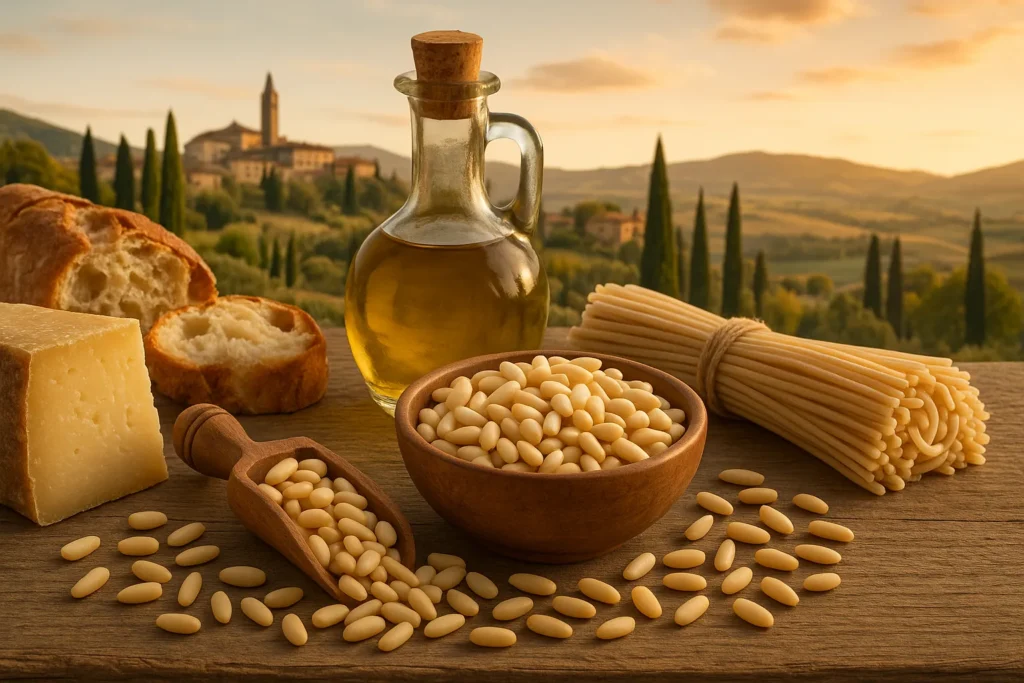
Some of the most impactful ingredients in Italian cooking are the ones most home cooks overlook completely. Pine nuts, for instance, appear in both sweet and savoury dishes across Italy. They add buttery richness to pesto and a delicate crunch to traditional cookies from southern Italy.
When you visit Italy, you’ll discover that high-quality ingredients extend far beyond the basics. Take porcini mushrooms, for example. They turn simple pasta dishes into restaurant-worthy meals with their earthy, intense flavour. Plus, wild mushrooms gathered during fall create depth in risottos that dried form cannot match.
You’ll also notice that fresh ricotta made daily at local markets tastes nothing like store-bought versions. The creamy texture makes cannoli filling and pasta dishes taste so much better. Other special treasures include white truffles that make your mouth water instantly.
In our experience, even small amounts boost the flavour and aroma dramatically. These artisanal touches become truly amazing when you see them change classic Italian dishes.
Italian Dishes: When Freshness Creates Perfect Harmony
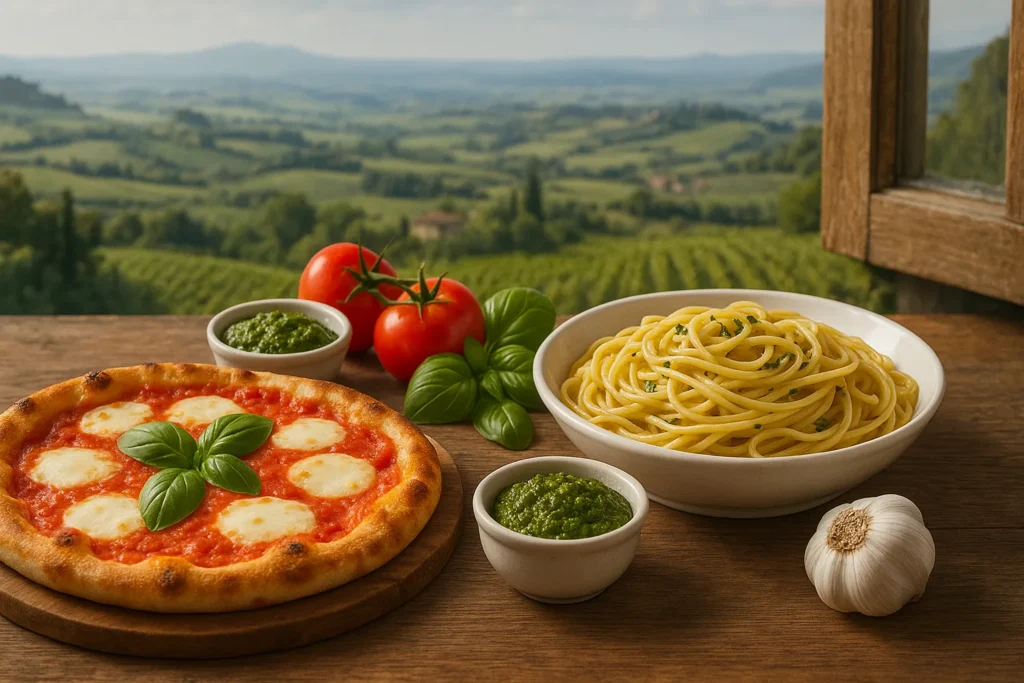
Let’s see fresh ingredients in action with three classic Italian dishes. The difference between fresh and processed versions will surprise you.
Here are three classic dishes where fresh ingredients make all the difference:
1. Margherita Pizza
We all love pizza, but what makes it so good? It’s the fresh basil and mozzarella. When basil hits the hot pizza, it releases sweet oils that fill your kitchen with amazing smells. Meanwhile, fresh mozzarella melts into creamy pools that taste nothing like regular cheese.
The truth is, for this classic, many Italian recipes rely on perfect timing. The finishing touch happens to be adding fresh basil after baking, so it keeps its bright flavour. Also, keep this in mind: traditional Italian recipes from Italy always use fresh mozzarella at room temperature.
2. Aglio e Olio:
If you want to turn your basic pasta into something delicious, your go-to ingredients would be quality olive oil and fresh garlic. You can start by sizzling the garlic gently, never brown, or it gets bitter. This simple dish proves that fewer ingredients often taste better when they’re fresh. That’s exactly why Italian dishes like this one have survived for generations.
3. Pesto Genovese:
Pine nuts and fresh basil create that bright green colour everyone loves. Compare this to dried basil, which makes a completely different sauce with dull colour and flat taste. The reason Italian cuisine insists on fresh ingredients in dishes like pesto is simple. Every component must be perfect for the sauce to work properly.
Once you experience these flavour differences firsthand, you’ll want to bring this level of freshness into your own kitchen.
Bringing Italian Freshness to Your Kitchen
To bring Italy to your table, you don’t need to live in Italy or spend a fortune to cook with authentic freshness. We recommend you start by finding local markets that carry seasonal produce and high-quality olive oil. As you explore, build your fresh ingredient collection gradually, focusing on one or two items each week.
How about you try fresh basil in your next pasta dish and taste how different it is from dried herbs. It doesn’t have to be pasta. You could make pizza with fresh mozzarella and see how much creamier it gets. Trust me, it will amaze you how these simple swaps make your food taste so much better and more authentic.
For those ready to improve their Italian cooking skills, hands-on classes help you learn much faster.
Fiore Restaurant‘s culinary classes offer expert guidance in authentic Italian cooking methods, where you’ll learn to work with the finest fresh ingredients under professional instruction.
Start with fresh ingredients today, and discover what authentic Italian food can taste like in your own kitchen.
